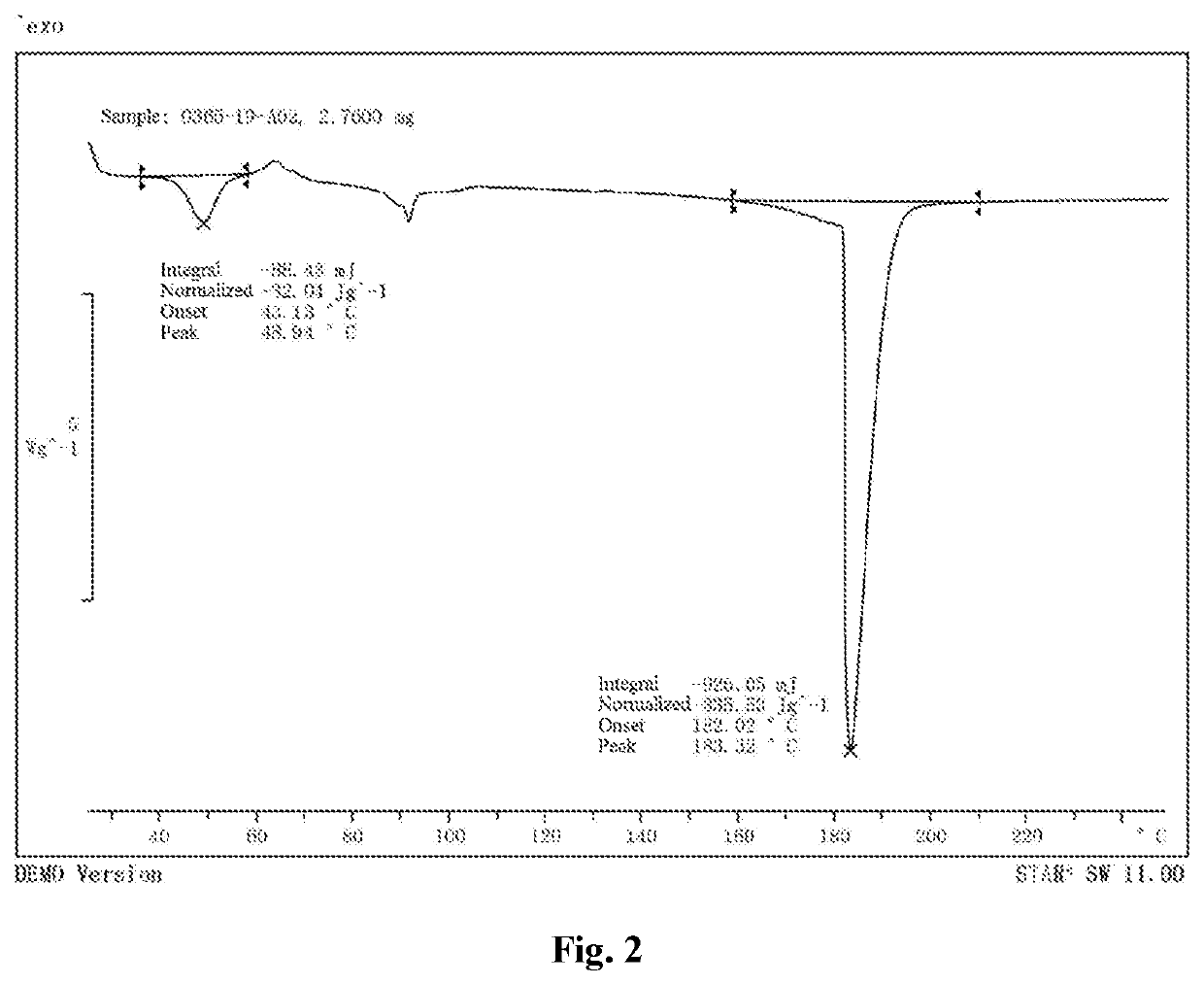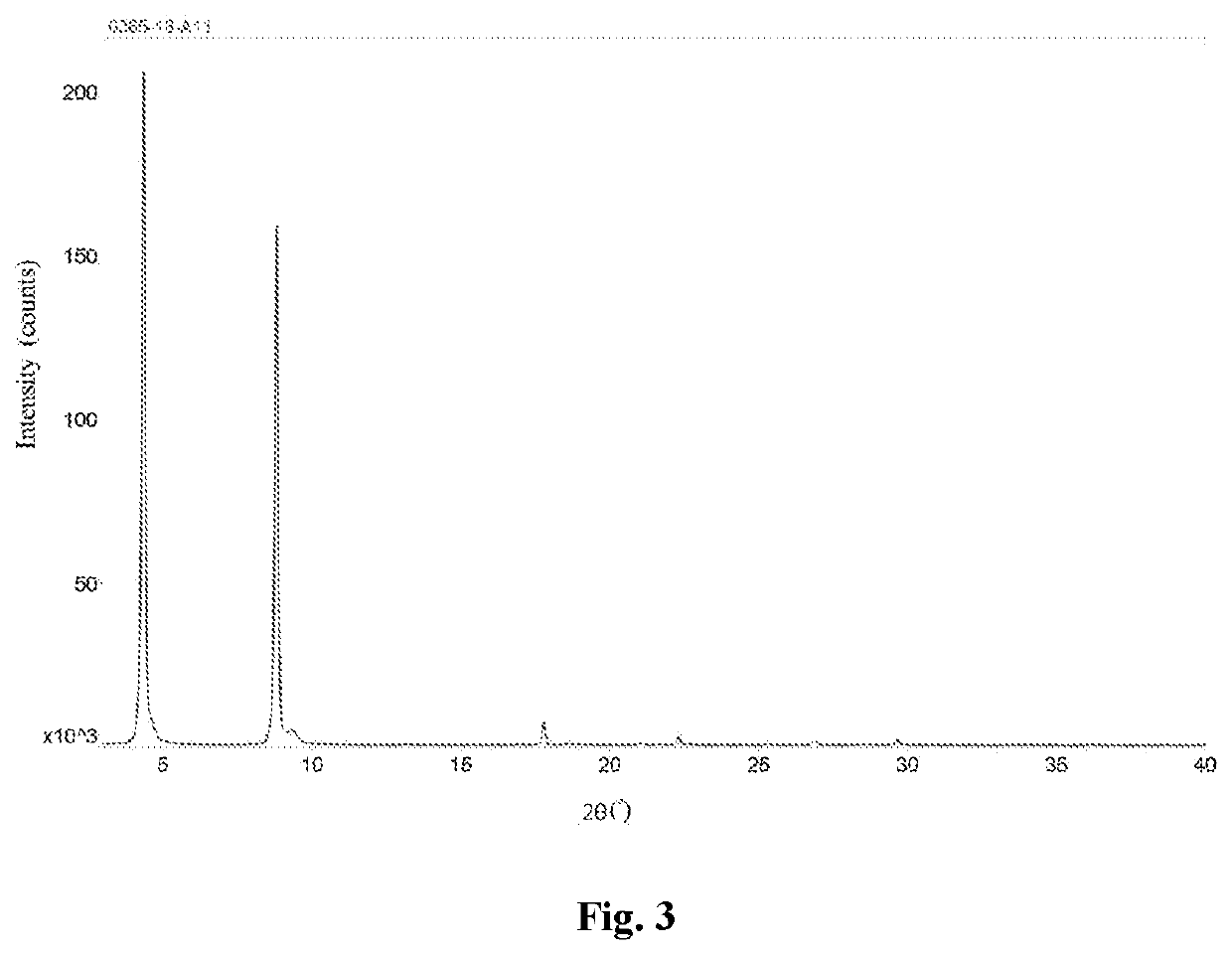Crystal forms of valsartan disodium salt
a technology of disodium salt and valsartan, which is applied in the field of new crystalline forms to achieve the effects of good quality during storage, clear endothermic peak, and significant endothermic enthalpy
- Summary
- Abstract
- Description
- Claims
- Application Information
AI Technical Summary
Benefits of technology
Problems solved by technology
Method used
Image
Examples
example 1
on of Crystalline Form A of Valsartan Disodium Salts
[0091]8.71 mg of valsartan was dissolved in 0.87 mL of isopropanol, and 0.2 mL of 2 mmol aqueous sodium hydroxide solution was added dropwise at room temperature. The mixture was stirred for 0.5 hour, and concentrated under reduced pressure to obtain a solid which was then stirred with n-heptane / ethanol (19 / 1, by volume) overnight, filtered, and vacuum dried at 40° C. to obtain a solid. 3 mg of the solid was added to 0.1 mL of methyl tert-butyl ether. After stirring for 72 hours, the supernatant was discarded after centrifugation, and the obtained solid was dried in an oven at 30° C. to yield a white solid, which is a type A valsartan disodium salt.
[0092]This valsartan disodium salt crystalline form A was subjected to a solid-state characterization by X-ray powder diffraction and differential scanning calorimetry. The solid-state characterization parameters and spectrums are as described herein.
example 2
on of Crystalline Form B of Valsartan Disodium Salts
[0093]10 mg of valsartan was added to 0.3 mL of water containing 1.84 mg of sodium hydroxide, and concentrated under reduced pressure to obtain a solid. 3 mg of the salt was added to 0.1 mL of 3-pentanone, and after stirring for 72 hours, the supernatant was discarded after centrifugation. The obtained solid was dried in an oven at 30° C. to yield a white solid, which is a type B valsartan disodium salt.
[0094]This valsartan disodium salt crystalline form B was subjected to a solid-state characterization by X-ray powder diffraction and thermogravimetric analysis. The solid-state characterization parameters and spectrums are as described herein.
example 3
on of Crystalline Form D of Valsartan Disodium Salts
[0095]8.71 mg of valsartan was dissolved in 0.87 mL of isopropanol, and 0.2 mL of 2 mmol of sodium hydroxide solution was added dropwise at room temperature. The mixture was stirred for 0.5 hour, and concentrated under reduced pressure to obtain a solid. The solid was stirred overnight with n-heptane / ethanol (19 / 1, by volume), filtered, and vacuum dried at 40° C. to obtain the valsartan disodium salt solid. 3 mg of the solid was added to 0.1 mL of n-heptane, and after stirring for 72 hours, the supernatant was discarded after centrifugation, and the obtained solid was dried in an oven at 30° C. to yield a white solid, which is a type D valsartan disodium salt.
[0096]This valsartan disodium salt crystalline form D was subjected to a solid-state characterization by X-ray powder diffraction. The solid-state characterization parameters and spectrums are as described herein.
PUM
| Property | Measurement | Unit |
|---|---|---|
| melting point | aaaaa | aaaaa |
| melting point | aaaaa | aaaaa |
| melting point | aaaaa | aaaaa |
Abstract
Description
Claims
Application Information
 Login to View More
Login to View More - R&D
- Intellectual Property
- Life Sciences
- Materials
- Tech Scout
- Unparalleled Data Quality
- Higher Quality Content
- 60% Fewer Hallucinations
Browse by: Latest US Patents, China's latest patents, Technical Efficacy Thesaurus, Application Domain, Technology Topic, Popular Technical Reports.
© 2025 PatSnap. All rights reserved.Legal|Privacy policy|Modern Slavery Act Transparency Statement|Sitemap|About US| Contact US: help@patsnap.com



